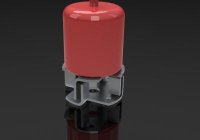Stacky, you are right. But wouldn't it be possible for the manufacturers to extensively test their product just with a few selected components and then give a recommonation ?...especially Flight Controls. I think the right way for manufacturers should rather be specialization than hunting for every fish in the pond. At least that's how I do it in my business, and this works very well.
Chris
Well, isn't this what DJI tried to do with the S800? And what happened to it?
I think a big part of the problem is as Al said: The airframe and assembly.
I'm in the market for a higher end octocopter, and I'm frankly just really disappointed at the prices I'm seeing for what I consider to be... pretty flimsy stuff. They all look like carbon fiber Mechano sets. And I think that is leading to a lot of the problems. So many people using round booms without even a helical strake to reduce vortex shedding, nor do they include any vibration damping on the motor mounts. All this leads to vibration which confuses the IMU. And don't even get me started on the DJI plastic arm system. Soon as I saw that, I wondered what they were smoking over there. Any 3rd year mech eng student could have instantly told you that is a terrible design for the job with very low torsional vibration. And now what are we seeing?
At the lower end of the market you've got guys trying to fly wooden frames, PCB frames, etc...
Then on the electrical side, most people are using independent ESC still, which leads to a rats nest of wiring, which in turn is prone to failure, and also causes crazy EMF problems affecting the compass calibration and also the GPS reception. Here DJI is one of the few who are doing it right, and mounting the GPS and Mag on a stick to get it as far away from the noise as possible. I don't know why it has taken the market so long to come up with integrated ESC's, I just discovered the HobbyWing Skywalker Quattro yesterday, and the Droidworks Aerodrive system this morning before I wrote this. These will drive up reliability, but still most poeple are using discrete ESC's.
Yet when it all goes wrong, the flight controller gets blamed.
Al is right on the money. These controllers are HUGELY complex. The PX4 board just announced yesterday is using an STM32F4 processor running 210MIPS, which is more powerful than a Pentium processor from 1994. That's incredible! The science of these things has gone from just barely flying a few years ago, to plug and play waypoint flying today. And all on a hobby budget!
So have we come too far too fast? I think the answer clearly is yes. But that's not a bad thing. Sure, things aren't perfect, and some people may experience crashes. But you also have access to an incredible amount of technology at an incredibly low price! Your other option is to purchase something from the low-end military-industrial-complex for something approaching $100,000, and then that craft would barely be able to lift an large P&S camera!
We're all on the bleeding edge here, it's true. But I see this as a really exciting time, and I think being on the bleeding edge of something as revolutionary as personal autonomous flying robots... is not a bad place to be. I've seen a number of people compare this to the personal computer industry in the late 70's, and I think that's right on the money. Back then, people asked "So... why are you putting so much effort into this? What are you going to do with a personal computer?!"
I can only imagine what it must be like now, to be one of the military industry guys watching what's happened in the past few years, after themselves having invested MILLIONS of dollars and trying to sell really small quads for $60k to recoup their costs...



